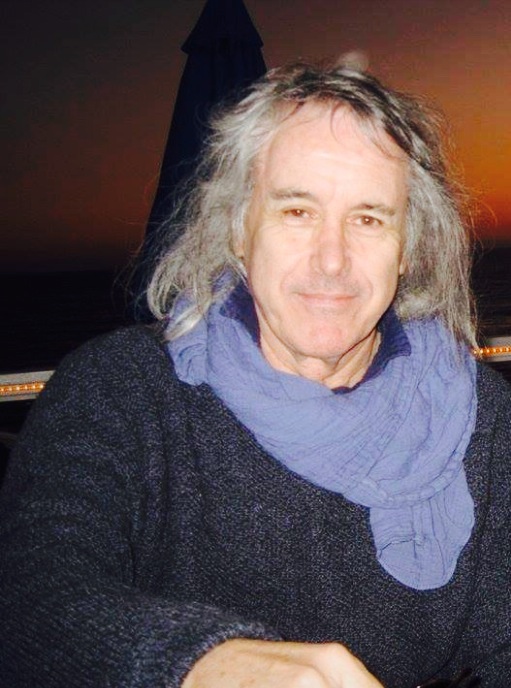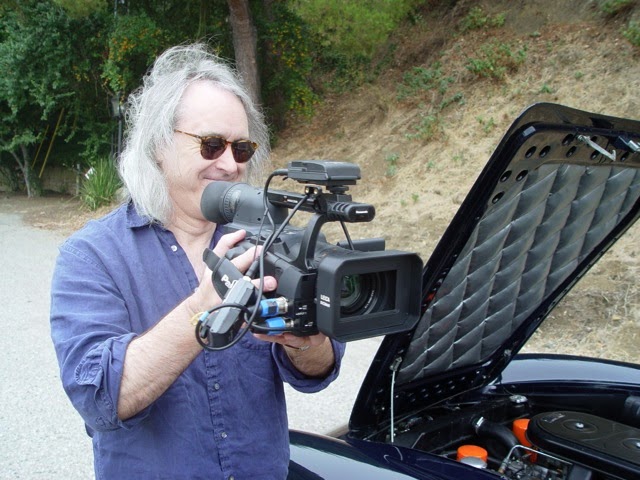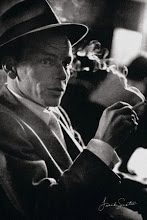It seemed to take me forever to get my filmmaking career underway. I grew up in a show business neighborhood where my friends’ parents were film and television stars and, as a teenager, I found a mentor in a family friend who directed an unending series of episodic TV shows and some TV movies and welcomed me onto the set whenever he was working. Still, as I came out of college having gotten stellar grades in all of my cinema courses, it took ten years before I found myself in Paris making my first film (in French, no less).
It must be said that my day job during those years of
waiting and figuring out how to get to make films wasn’t too hard to take. I traveled to London and Milan
to buy vintage Bentleys, Ferraris and Maseratis and brought them back to Los Angeles for resale. It
was party time while I was overseas and driving the cars around Los Angeles was also part
of the fun. If I couldn’t make films, at least I was living my life as though I
were in a movie.
Having made my first film in Paris and vowing to live there
forever, I made the mistake of returning to Los Angeles to market a couple of
projects I’d made—one being a pilot called The French Chef featuring award
winning actor Philippe Léotard and a girl from the Crazy
Horse Saloon in Paris in what was a combination of travelogue, cooking show and
comedy. I say I made a mistake because I ended up staying in L.A.
rather than returning to Paris
because people started giving me money with which to make films and it was hard
to walk away from that, I can tell you.
As I got accustomed to making independent films, I had a
constant need for actors but found that seasoned actors with exceptional brand
signatures were not so easy to find. A distributor told me he liked the story
and direction of my first film shot in the U.S. but I needed to get better
actors. Something had to be done. Ironically, the actors I had used in the film
had all studied in workshops that were considered top notch. Clearly, not
everyone who attends a great workshop comes away capable of giving a great
performance but how does one improve on the best? I needed to get better
results.
In those early days, I had consulting clients whose
professional lives I managed. I started by working with two women who made
clothing, added a hairstylist and then an attorney before I found actors coming
to me for help. I thought of it as career management but the light went on one
day and I decided I would only take actors, writers and directors from that
point on. Instead of charging them consulting fees, which could be expensive, I
would consult for free with any members of what would become the world’s only
repertory company for film and television. Dues of twenty dollars a week
replaced consulting fees that were considerably more expensive. The membership
grew rapidly and we maintained a list of about a hundred actors along with a
dozen writers and half a dozen directors.
I patterned the rep company on the old Hollywood
studio system which had various activities which included the development of
actors. They taught actors to sing and dance and walk down stairs without
looking at their feet and put on a coat without looking as though they were
wrestling an octopus and, by the way, they were given acting lessons. Actors
were branded and developed so as to make them attractive to audiences. When the
studio wasn’t using an actor, it loaned out the actor to other studios. The
system created unparalleled opportunities for an actor to have a career.
Actors in our rep company developed their acting brands by
performing in taped one-act plays that the writers in the group had written
specifically for them. We watched to see how well a writer could write for the
actors as well as how well the actor could perform the piece. The feedback of
seeing the performance on tape—as opposed to having a workshop instructor
saying “Very good”--was quite effective. If you were to look at the first taped
performance and compare it to the sixth tape done by an actor in the group, you
would see a world of difference. The tapes were put on cable and served to
market the actor to ‘mainstream’ Hollywood
and you would be amazed at the names of the directors who responded to these
performances.
The actors were instructed in PR. Each actor began by
learning how to present themselves as actors and how to speak about their
performances in a way that made people want to find out more. Every taped
performance was followed by a PR interview being mailed to film directors and
producers, as these were the people to whom we marketed our actors when they
weren’t acting in films made within the group.
A dozen or so actors within the group developed into
writer/directors--Kathi Carey being a notable example. Every
other week, the writer/directors, along with any of our actors who were
interested, would gather to watch a film that we would dissect and discuss. It
was interesting to note that the films that had become classics withstanding
the test of time all seemed to conform to Syd Fields’ paradigm. Those that had
fallen into oblivion strayed from the natural aesthetic that Fields described
so well in his books.
Over the years, our members became more and more involved
with mainstream Hollywood
while fiercely maintaining our independence. For example, all of our
writer/directors and a few of our actors became judges for the CableACE Awards.
I judged for nine years until these awards were folded into the Emmys.
The films we made were shot guerilla-style and this probably
was owing to a combination of necessity and my fondness for the films of the
French New Wave which broke from the studio tradition and shot films in the
streets and actual locations. The quick tag line for my films was ‘Thinking
man’s cop dramas’ along the lines of the French films Shoot the Piano Player or Without
Apparent Motive. Each of our writer/directors had their own personal brand
signature as filmmakers. Part of the instruction for directors was how to
handle location shoots—getting permission, handling the logistics and knowing
how to get in and out quickly.
The rep company operated from approximately 1981 until 2001
when I began to travel returning to France to make a film and look for
a place to live there. Over the years, the dues went from twenty dollars a week
to thirty-five. It was an extraordinary way to receive training, branding, PR
and free management consultation while acting in films where the parts had been
written specifically for you. We referred to it as The New Hollywood Studio
System.
The original studio system finally ended not because it became
less effective at developing and branding talent and producing vehicles for
them. It disappeared only after the federal government insisted that the
studios could not vertically integrate by having all aspects of production,
distribution and owning the theaters as well. The great benefit to talent that
was the old studio system came to an end as a result of a Sherman Antitrust
action and the losers were the creatives as the financial component of the
system found other ways to protect its investments.
A studio system such as I organized would, I believe, be
viable and sustainable today presuming the elements of education, branding,
production and marketing functioned effectively to compensate the organization
and its participants. What you teach your students changes radically when you
have to sell the results of your teaching—it was what made our curricula
different from the workshops that covered the same subjects but were free from
having to rely on the quality or saleability of the result.
Sadly, there is no such group in existence today of which I
am aware. It must be said that a group creates power that an individual often
lacks and if one can band together a group of actors, writers and directors,
whether in Los Angeles or Little Rock, I think it could make an impact
and benefit the careers of those taking part in its activities.

























































1 comment:
Excellent! By the way, I´m searching the button for FB linking to the posts. Where is it? I like to publish your posts in my FB page. Best regards.
Post a Comment